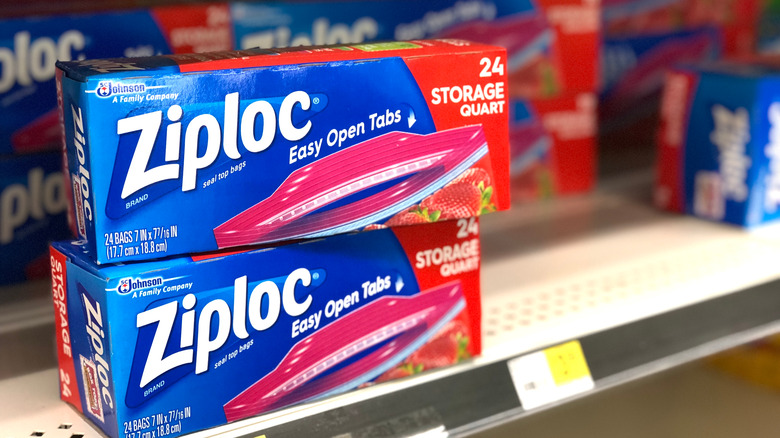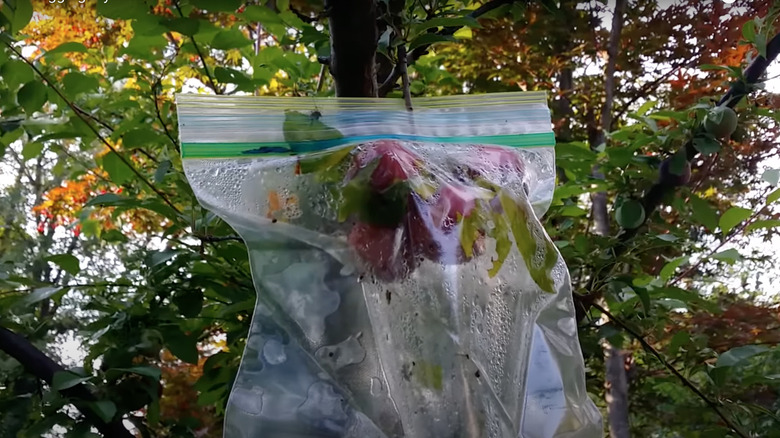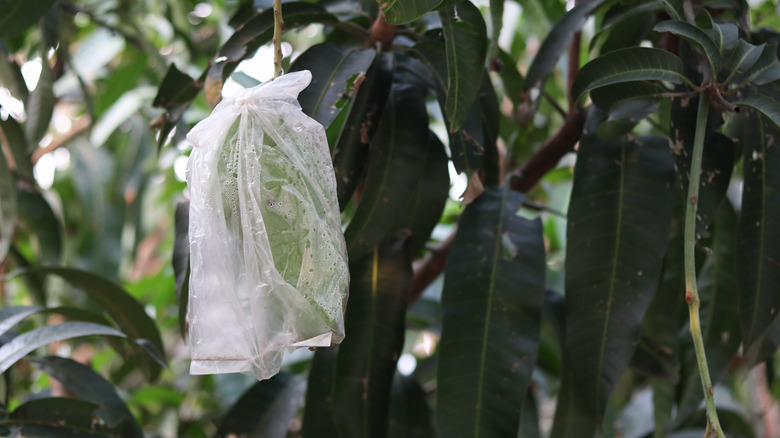The Gardening Hack That Involves A Ziplock Bag
Nothing's worse than putting all your time and effort into producing beautiful fruit and vegetables, only to have the bugs beat you to it. Luckily, you can use an easy, almost free hack to keep them away: plastic ziplock bags. The bags fit around the fruit nicely and will keep the critters out while allowing the fruit to have sunshine and room to grow, and it will only take a few minutes to get it set up.
Since you probably already have bags on hand, it's a cost-effective and convenient method. There are plenty of pest control options to choose from, but many of them become costly over time. Plastic bags are easily affordable, and you can pick them up while you're at the grocery store. You also get the benefit of chemical-free pest control, so you don't need to worry about what you're spraying on your produce or if kids and pets will come into contact with it.
Keep pests away with a plastic bag
The plastic bag method is popular among commercial growers, but backyard and patio gardeners can also benefit from this helpful hack. Killing pests as you see them is only so helpful since you can't always be outside, even if you want to. Plastic ziplock bags can make that a little more possible. The bags create a physical barrier that pests can't cross, stopping moths and other insects from laying eggs that turn into insatiable diners that will eat up your crops. You may have to deal with pests when the bags aren't on the fruit, but you can combat them with pesticides or organic pest control methods while the bag is off.
Though it's not a foolproof plan, it can greatly reduce the number of pests on your fruit. Jan Rhodes at The Backyard Gardener tested the bags and found that some of her apples had caterpillar problems, but it could have been due to how she tied them up. She also found that the covered apples took slightly longer to develop their color, but they still turned out as expected.
How to bag up your fruit
Bagging your fruit is a simple process. If you do everything at once, the time may add up, but doing it as new fruits develop won't take but a minute or so. This method is really only used on fruit and isn't so popular on vegetables, but it wouldn't hurt to try it if you're up for an experiment in the backyard. It's a common practice in apple and pear orchards, but it also works on tomato plants. (Tomatoes are fruit, after all.)
Start bagging the fruit when they're small. Don't bag up flowers, as they need to be accessible by pollinators to develop fruit. For apple trees, thin them out once the fruit is at least one-half-inch in diameter. Thinning is when you remove all but one fruit from a cluster. You'll get fewer fruits, but they'll be larger and higher quality. You can then place bags around the fruit by slipping it over the bottom and securing the zipper seal around the branch. If you don't have a ziplock bag or it won't shut properly, you can use a twist-tie for a more secure closing. Remove the bags about three weeks before you're ready to harvest the fruit so they can properly develop their color.


